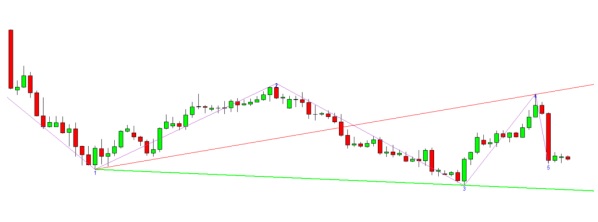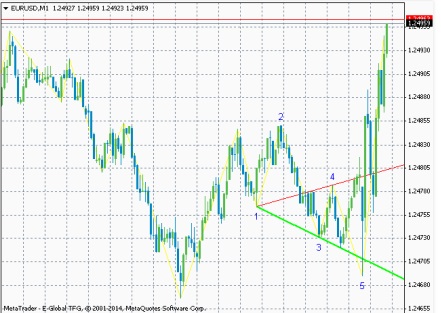Every trader aspires to be able to forecast the future with absolute certainty, yet this is something that humans are incapable of doing. Technical traders use a range of data points and indicators to spot trading opportunities and support their trading decisions. The Wolfe Wave is one particular chart pattern that has grown in favor among traders. In this article, we’ll discuss Wolfe Waves and offer tips for successfully trading this chart pattern.
Free PDF Guide : Get your How to Master the Wolfe Wave Trading Strategy: A Comprehensive Guide
Table of Contents:
- Introduction to the Wolfe Wave
- Rules for Identifying Wolfe Waves
- Bearish Wolfe Wave Pattern
- Bullish Wolfe Wave Pattern
- Trading Strategies for the Wolfe Wave
- Wolfe Wave Indicator for Technical Analysis
- Wolfe Wave Scanner for Trading Signals
- Lastly
Introduction to the Wolfe Wave
Bill Wolfe, an S&P trader, first identified the Wolfe Wave more than 20 years ago. He thought that any security’s financial chart could constantly display this pattern because it was a natural occurrence. The supply and demand principles, which create support and resistance levels and predict that prices will return to equilibrium after a break-out, are the basis for the pattern. To profit on a break-out in the price of a share, technical traders look for the Wolfe Wave. The pattern, which comprises of five-wave patterns and can arise in any time frame, analyzes an underpinning price equilibrium. The Wolfe Wave’s correctness depends on being able to correctly detect these waves since they give the right equilibrium balance. A Wolfe Wave forecasts the direction and timing of a price’s movement. It can be found in stocks whose prices are consolidating, uptrends (bearish Wolfe Wave), downtrends (bullish Wolfe Wave), or neither. There are particular guidelines that must be met in order for a wave to qualify as a Wolfe Wave, which we shall look at in the following sections.
Rules for Identifying Wolfe Waves
To qualify as a Wolfe Wave, the pattern must adhere to the following five rules:
- Waves 3-4 must stay within the channels created by 1-2.
- Waves 1-2 must exhibit symmetry with waves 3-4.
- Wave 4 must remain within the channel created by waves 1-2.
- Regular intervals should exist between all the waves. The time between low to low or high to high should be equal. For instance, the time between waves 1-3-5 is identical.
- Wave 5 is the break-out and serves as the trader’s entry point, exceeding the trend line created by waves 1 and 3. Waves 3 and 5 are typically 127% or 162% extensions (Fibonacci) of the previous channel point.
Traders must adhere precisely to these guidelines in order to recognize the Wolfe Wave. They must follow these guidelines in order for the pattern to be accurate. You can use the graph below as a guide to spot the pattern.


Bearish Wolfe Wave Pattern
The negative A chart pattern called a Wolfe Wave appears after a rise in a security’s price. It is viewed as bearish since the last wave leads to a breakout where the price of the security falls.
Bullish Wolfe Wave Pattern
The positive Wolfe Wave is the polar opposite of its negative twin since it is a chart pattern that occurs after a decline in a security’s price. The final wave produces a breakout where the price of the security rises, making the pattern positive.
Trading Strategies for the Wolfe Wave
Traders must first decide on the profit goal line before employing this method. To do this, they can draw a line joining the pattern’s first and fourth points. This line will show the expected direction of the security’s price movement. The trader should open a long position during the fifth wave if the pattern is positive. If the pattern is bearish, on the other hand, the trader should open a short position in the fifth wave. Once the security’s price crosses the profit goal line traders set earlier in the trade, they must close their holdings.
Wolfe Wave Indicator for Technical Analysis
Although it is not particularly difficult to recognize a Wolfe Wave, several brokerages and trading platforms provide traders with a Wolfe Wave indicator. Wolfe Waves are automatically detected by these indicators, making it simpler for traders to recognize the pattern. A Wolfe Wave indicator is offered by a number of platforms for traders to use.


Wolfe Wave Scanner for Trading Signals
Similar to the indicators stated previously, the Wolfe Wave scanner examines the Wolfe Wave chart trading method for potential reversal signs. This instrument is accessible to traders on a variety of platforms, and they have a number of good options. The links to two Wolfe Wave scanners for TradingView and MetaTrader 4 are provided below.
Lastly
The Wolfe Wave is an effective tool for traders to foresee breakouts and profit from them. However, traders must precisely abide by the five guidelines listed previously in this piece in order to guarantee a true Wolfe Wave. If not, the pattern might be the consequence of arbitrary price fluctuations. It’s crucial to remember that analyzing charting patterns after the fact makes it straightforward to pinpoint when to enter or leave a trade. It is far more difficult to accomplish this in real-time when there is a chance of losing actual money. Beginner traders should start with smaller sums of money until they have accumulated enough experience.

